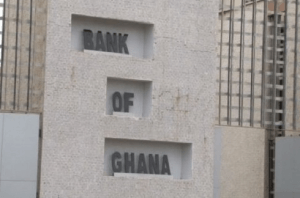Why Moody’s downgraded Ghana’s sovereign rating from B2 to B3
 When Moody’s, the ratings agency downgraded Ghana’s sovereign rating from B2 to B3, it gave the following justifications.
When Moody’s, the ratings agency downgraded Ghana’s sovereign rating from B2 to B3, it gave the following justifications.
Moody’s says, the first driver of the downgrade is Ghana’s deteriorating fiscal strength as reflected in the significant increase in the government debt ratio to an estimated 67.2% of GDP in 2014 from 54.8% in 2013, driven by the large fiscal deficit at 9.4% in 2014, and adverse debt dynamics fueled by high domestic interest rates and currency depreciation against the US dollar. Limited fiscal and external buffers in the face of tighter US dollar liquidity, economic headwinds and terms of trade shocks increase the risk for these adverse debt dynamics to persist.
Moody’s holds the view that the main focus under the three-year IMF programme (recently agreed at staff level, pending IMF board approval expected in April) is fiscal consolidation via expenditure control and increased tax collection, building on the budgetary measures implemented in the 2015 budget.
However, this fiscal consolidation effort will take place in the context of a slow growth environment which dampens revenue generation capacity.
According to Moody’s, Ghana’s debt affordability is already among the weakest in Moody’s rated universe, with annual interest payments amounting to about one third of revenues in 2014.
It notes that the growth slowdown is being exacerbated by a significant power shortage currently amounting to almost a third of peak demand. Moody’s expects a more muted fiscal consolidation path over the next two years than envisioned by the government in view of significant investment needs to resolve the power crisis, in addition to the election cycle in 2016 which has historically coincided with expenditure overruns.
The second driver of the downgrade Moody’s says, “reflects increased government liquidity risk in view of large gross borrowing requirements amid more difficult domestic and external funding conditions. In particular, higher prevailing risk premia than in October 2014 during Ghana’s most recent Eurobond issuance add to the challenges of returning to the international markets ahead of the $530 million Eurobond maturing in 2017, notwithstanding the establishment of a Sinking Fund aimed at assisting with future debt repayments.”
On the domestic side, it says “large domestic rollover needs and a front-loaded issuance calendar have driven interest rates to over 26% in the short-term T-bill segment. The IMF programme also reduces the scope for central bank support in financing the current year fiscal deficit.”
Moody’s observes that balance of payments risks are partially mitigated by the $940 million IMF programme (equivalent to 2.4% of GDP). Adverse terms of trade shocks with respect to the country’s main exports, gold and oil, weigh on both the fiscal and external accounts. According to the revised 2015 budget, lower oil prices will cost the government revenues of about two percentage points of GDP.
“At the same time,” Moody’s says, it “expects sufficient foreign direct investment and other capital flows to fund most of the anticipated large current account deficit this year and next. As a result, the country should be able to maintain foreign exchange reserve coverage of imports at between 2.5 and 3 months on a gross basis during that two-year period, even as net reserves excluding the Bank of Ghana’s foreign exchange swaps with resident banks and bridge loans with external counterparties remain low.”
On the rationale for keeping a negative outlook, Moody’s says, is the prospect of worse than expected debt dynamics taking hold if budgetary outcomes are much worse than anticipated and if the exchange rate does not stabilize in the near term, with concomitant pass-through to inflation and high domestic interest rates.
The negative outlook, Moody’s notes, also captures the increased uncertainty generated by the maritime border dispute with Côte d’Ivoire for the development and exploitation of the TEN oil field which the government now expects to come on-stream in the second half of 2016. Coupled with the Sankofa offshore gas project further east that is scheduled to commence production in 2017, increased oil and gas production should otherwise ease the downward pressures on the country’s foreign exchange buffers and support medium-term growth prospects.
The ratings agency, however stated some factors that might change the outlook to either up or down.
It believes that downward pressure on the rating could arise from factors that include (1) continued delays in fiscal consolidation or in the resolution of the power crisis; (2) a sustained decline in oil or gold prices that would put further downward pressure on fiscal revenues and export receipts; (3) sustained loss of market access; (4) continued pressure on the balance of payments and on international reserves.
“A return to a stable outlook on Ghana’s sovereign rating could develop as a result of: (1) accelerated and sustained fiscal consolidation that would stabilize the government’s debt burden, supporting a gradual reduction over the medium term; (2) a strengthening of FDI inflows as a source of funding for the country’s large power and infrastructure investment needs; (3) a bolstering of Ghana’s foreign-exchange and/or fiscal reserves that would reduce the country’s vulnerability to domestic or external shocks,” it adds.
By Emmanuel K. Dogbevi
